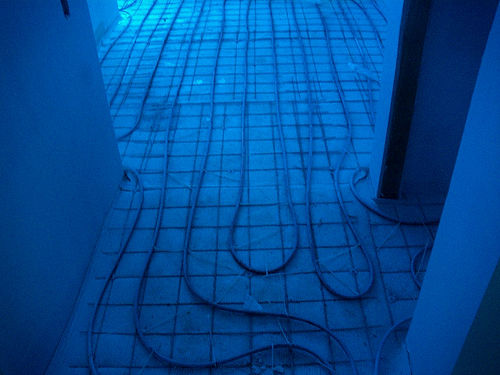When it comes to keeping your home warm and toasty in the colder months, you have many options. Space heaters are very inexpensive and can help you out if you only need warmth in a few small rooms. Central heating will blow warm air throughout your home, but requires maintenance, such as the changing of air filters and other repairs. In-floor heating has become a popular option, particularly in bathrooms and other tiled spaces where you will often be barefoot and needs some heat. Fairly easy to install, electric in-floor heating can endure for a long time and is a reliable way to start heating a room. Here are just a few of the reasons why you should consider in-floor electric heating in your home.
Installation
If you have floors currently in place, you will need to rip them up to install in-floor heating. However, if you are already planning a remodel, the installation will only require a few extra steps. The wiring for in-floor electric heat is usually attached to a mat, which is laid down in strips. While attaching the wired mat to your home’s electrical system is best handled by an electrician if you are unfamiliar with the correct way to do it, actually laying down the heating system is not a complicated process. The ease of installation makes in-floor heating a good alternative to installing or altering a duct system for central heating.
Energy Efficiency
Even though electrical floor heating can successfully warm up your room from the ground up, it doesn’t require as much electrical output as many other heating sources. In fact, some electrical flooring only emits about 12 watts per square foot, so a 30 square foot mat will only require about as much power as a large electrical blanket. This will reduce your effect on the power grid and can save you money in your electric bill in the colder months.
Longevity
Unlike a radiator or furnace which will inevitably become broken or need replacement, in-floor electrical heating is very difficult to damage once properly installed, and can stand the test of time. This means less long term hassle for you, and the feature might be a very attractive asset during home resale because it doesn’t come with an expiration date. A thermostat inside of the electrical mat will cut off the power to the heating if an electrical short or other problem happens, which can usually protect the heating system from experiencing a larger problem.
Space
Because in-floor heating is installed beneath the tile in your home, it won’t occupy the space that a radiator or space heater requires in the room. If you have a small bathroom or entry way that requires some warmth, in-floor heating means that you will have more space for other essential furniture and accessories. You can remodel most aspects of your space without needing to move or think about the heating – unless, of course, you want to redo your tile floors again.
Considerations
In-floor electrical heating is an investment. While the initial cost will be more than that of a space heater or other small heating unit, it will last longer and is safer because it can’t lead to an accidental fire. Consider the process an upgrade that will pay itself off over time, making it worth the time and money that goes into the installation process. You can use in-floor heating exclusively in your home if you have tile or hard surfaces throughout, or as a supplement to another heating system that doesn’t quite heat your home to the degree that you would like.
Laura Ginn knows the advantages that come from having under floor heating and how it can make even the coldest room feel inviting. She uses the uSwitch energy comparison website for her heating systems to ensure that she does not pay too much when the temperature drops.
